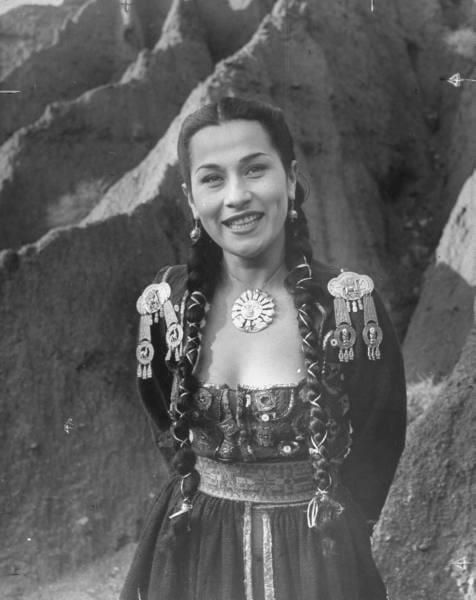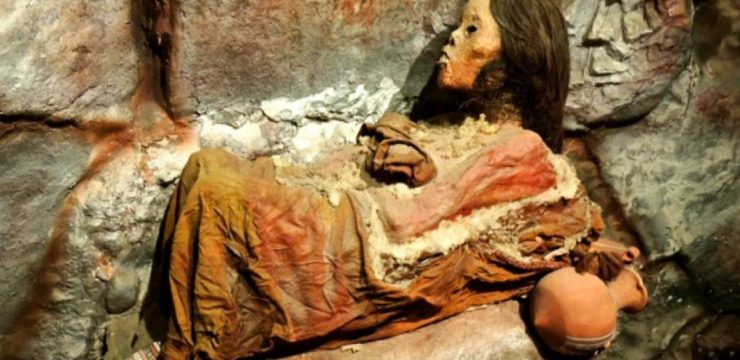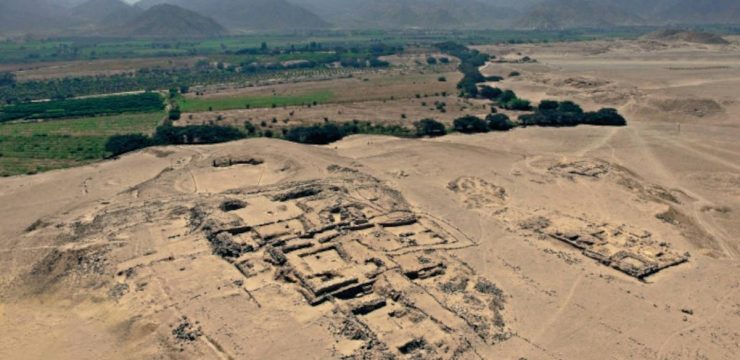Yma Sumac, born Zoila Augusta Emperatriz Chávarri del Castillo on September 13, 1922, in the small town of Ichocán, Cajamarca, Peru, became one of the most extraordinary musical figures of the 20th century. Her voice, an astonishing soprano spanning more than four octaves, captivated global audiences and set her apart as a rare talent in the world of music. Rising to fame in the 1950s, she blended elements of her Andean heritage with the grandeur of Hollywood’s golden age, forging a unique artistic identity that continues to influence musicians and performers today.

Sumac’s life story is as intriguing as her music. Beyond her vocal abilities, she cultivated an enigmatic image that enthralled both fans and the media. One of the most compelling aspects of her persona was her claimed lineage to Incan royalty. According to Sumac, she was a direct descendant of Atahualpa, the last ruler of the Inca Empire. Although this claim remains historically unverified, it became an essential part of her allure. By linking herself to Peru’s imperial past, she evoked a sense of ancient mysticism that fascinated audiences worldwide. Whether fact or myth, this narrative helped shape her public identity and created an air of intrigue that surrounded her career.
Her musical breakthrough came in 1950 with the release of Voice of the Xtabay, an album that introduced the world to her breathtaking vocal capabilities. Sumac’s artistry lay in her ability to merge traditional Andean melodies with contemporary Western arrangements, crafting a sound that was both exotic and sophisticated. At a time when audiences in the United States and Europe were eager for something new and different, her music provided an experience unlike anything they had heard before. Her songs incorporated the sounds of the Peruvian highlands, fused with the orchestral richness of Hollywood, creating a blend that was simultaneously ancient and modern.
Her performances were more than just concerts—they were grand spectacles. Sumac’s stage presence was as mesmerizing as her voice, enhanced by elaborate costumes inspired by traditional Andean attire. Draped in rich, colorful fabrics and adorned with intricate jewelry, she embodied a vision of Peru’s legendary past while delivering a sound that felt almost otherworldly. Her ability to shift effortlessly between deep, guttural tones and impossibly high notes left audiences spellbound, earning her comparisons to the most renowned operatic sopranos of the time.
Throughout the 1950s and into the 1960s, Sumac’s career flourished. She performed on some of the world’s most prestigious stages, from Carnegie Hall in New York to the Royal Albert Hall in London. She also starred in Hollywood films, including Secret of the Incas (1954), which featured Charlton Heston and showcased her exotic appeal to an even wider audience. Her ability to capture the imagination of the Western world was a testament not only to her talent but also to her skillful presentation of an identity that was both rooted in tradition and tailored to contemporary tastes.
Despite her international success, Sumac faced challenges, particularly in how she was perceived by different audiences. In the United States and Europe, she was often promoted as an exotic curiosity rather than as a serious musician. While some saw her as a novelty act, others recognized her immense vocal talent and appreciated the complexity of her music. In Peru, reactions to her fame were mixed. Some celebrated her as a national treasure who brought Peruvian culture to the global stage, while others criticized her for commercializing indigenous music in a way that catered to Western sensibilities.
However, regardless of how she was viewed, Sumac’s influence on music remains undeniable. Her vocal range was so exceptional that it defied classification. While many described her as a soprano, her ability to produce deep contralto notes as well as high-pitched coloratura flourishes made her voice unlike any other. She could shift seamlessly between registers, producing sounds that at times resembled the calls of the jungle or the chants of ancient rituals. Her style, often referred to as “exotica,” contributed to a broader fascination with world music in the mid-20th century.
By the late 1960s, changing musical tastes led to a decline in her mainstream popularity, but she never truly disappeared from the public eye. In the 1970s and 1980s, she experienced a resurgence as younger generations rediscovered her work. Musicians and artists across genres, from rock to electronic music, found inspiration in her recordings. Elements of her music have been sampled by modern artists, and her influence can be heard in everything from operatic pop to experimental world fusion.
Sumac’s legacy extends far beyond her personal achievements. She played a crucial role in introducing Peruvian and Andean music to the world stage, demonstrating that traditional sounds could be adapted and appreciated by global audiences. At a time when indigenous cultures were often overlooked or marginalized, she brought a sense of pride and recognition to Peruvian heritage. Her music helped bridge cultural gaps, showcasing the richness of South American traditions while embracing the possibilities of modern production.
Even decades after her passing in 2008, Yma Sumac remains an icon. Her recordings continue to captivate listeners, and her story serves as a reminder of the power of reinvention and the timeless appeal of musical innovation. Her ability to craft a persona that combined myth, history, and talent ensured that she would never be forgotten. Today, she is celebrated not only as a singer with an extraordinary voice but also as a cultural ambassador who left an indelible mark on the world of music.
Through her unparalleled vocal abilities, dramatic performances, and intriguing personal mythology, Yma Sumac carved out a place in history that remains unmatched. She was more than just a performer—she was a phenomenon, a bridge between the past and the present, the traditional and the modern, the mystical and the tangible. Whether one views her as an Incan princess or as a brilliant artist who mastered the art of spectacle, one thing is certain: Yma Sumac’s voice will echo through the ages, continuing to inspire and astonish all who hear it.





